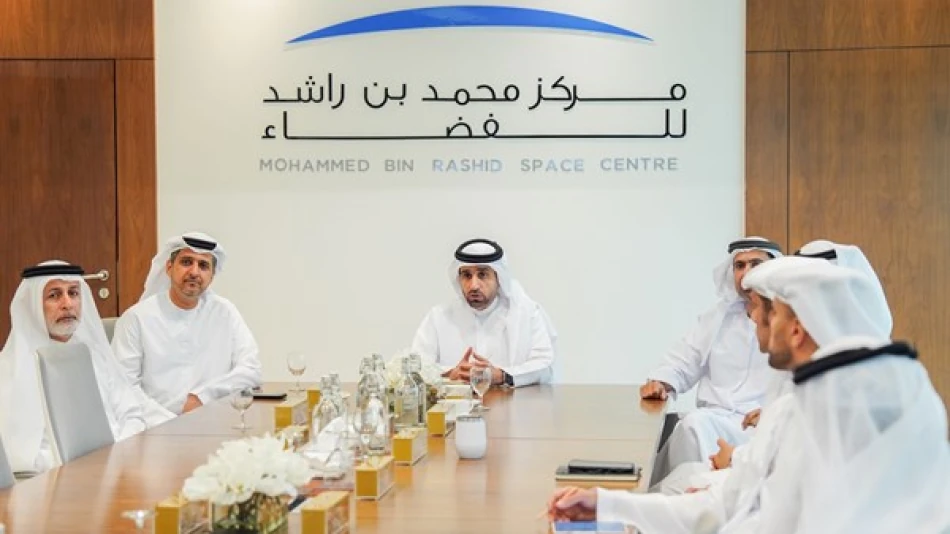
UAE's Sheikh Mohammed's Space Endeavors Showcase Strategic Advancements
UAE Accelerates Space Ambitions with Bold Lunar Mission and Satellite Program Expansion
The Mohammed bin Rashid Space Centre has outlined an ambitious roadmap that positions the UAE as a serious contender in the global space race, with plans including a groundbreaking mission to the far side of the moon by 2026 and an expanded satellite constellation program. The strategic push reflects the Emirates' determination to diversify its economy beyond oil while establishing itself as a regional technology hub.
Far Side of the Moon: UAE's Next Frontier
The centerpiece of the UAE's expanded space program is the "Rashid Explorer 2" mission, scheduled to reach the far side of the moon in 2026. This represents a significant leap in complexity from the original Rashid rover mission, which unfortunately crashed during its lunar landing attempt in April 2023.
Only three nations—China, the United States, and the former Soviet Union—have successfully achieved soft landings on the lunar surface. If successful, the UAE would join an even more exclusive club, as only China has managed to land on the moon's far side, accomplishing this feat with its Chang'e 4 mission in 2019.
Learning from Setbacks
The failure of Rashid 1 provides valuable lessons for the upcoming mission. The original rover was lost when the Japanese Hakuto-R lander carrying it crashed during descent. This experience has likely informed the UAE's approach to Rashid 2, potentially leading to partnerships with more established space agencies or the development of indigenous landing capabilities.
Satellite Constellation Strategy Takes Shape
The board meeting highlighted progress on two major satellite projects: "Mohammed bin Zayed Sat" and "Ittihad Sat." These missions form part of a broader strategy to establish the UAE as a regional leader in Earth observation and telecommunications.
This approach mirrors successful models from other nations. India's space program, for instance, built its reputation through cost-effective satellite missions before advancing to Mars exploration. Similarly, the UAE appears to be leveraging satellite technology as a foundation for more ambitious deep-space missions.
Economic and Strategic Implications
The UAE's space investments serve multiple strategic purposes beyond scientific achievement. The country is positioning itself as the "Singapore of space" in the Middle East, offering launch services, satellite manufacturing, and space technology development to regional partners.
Diversification Beyond Oil
These space initiatives align with the UAE's Vision 2071, which aims to make the country the world's leading nation by the centennial of its founding. The space sector offers high-value job creation, technology transfer opportunities, and potential export revenues from satellite services and space technology.
Countries like Luxembourg have demonstrated how smaller nations can carve out profitable niches in the space economy through strategic investments and favorable regulatory frameworks. The UAE appears to be following a similar playbook, but with significantly more financial resources and regional influence.
Astronaut Program Gains Momentum
The meeting also reviewed achievements in the UAE's astronaut program, which has already seen Hazza Al Mansouri become the first Emirati to visit the International Space Station in 2019, followed by Sultan Al Neyadi's six-month mission in 2023.
This human spaceflight capability provides the UAE with diplomatic soft power and technical expertise that few nations possess. It also creates a pipeline of skilled professionals who can lead future space missions and inspire the next generation of Emirati scientists and engineers.
Global Context and Competition
The UAE's space ambitions unfold against a backdrop of intensifying global competition. Private companies like SpaceX have dramatically reduced launch costs, while nations including India, Japan, and South Korea are expanding their own space capabilities.
However, the UAE's approach differs from purely cost-driven strategies. By focusing on high-profile missions like lunar exploration and maintaining a strong human spaceflight program, the Emirates is building a space program that serves both scientific and diplomatic objectives.
The success of these initiatives could establish the UAE as the dominant space power in the Middle East and a respected partner for international collaborations, potentially opening doors to participation in future NASA Artemis missions or European Space Agency projects.
Most Viewed News

 Layla Al Mansoori
Layla Al Mansoori






